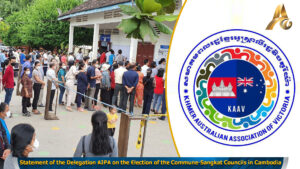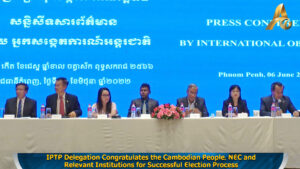Cambodia Committed for Angkor Preservation
Prime Minister Samdech Akka Moha Sena Padei Techo Hun Sen this morning reaffirmed Cambodia’s commitment to adhere to all requirements to preserve the Angkor temples as one of the World Heritage sites of UNESCO.
Addressing to the inauguration ceremony of 38-road development project in Siem Reap provincial city, Samdech Techo Hun Sen said Cambodia will not let Angkor Wat be removed from the UNESCO World Heritage List.
“We cannot compare the real estate development in Siem Reap to other cities. If we act recklessly, our Angkor Wat may be removed from the World Heritage List,” he underlined. “Cambodia does not lack space for real estate development.”
The Premier expressed his gratitude to the International Coordinating Committee for the Safeguarding and Development of the Historic Site of Angkor (ICC-Angkor), the Co-Chairs France and Japan, and UNESCO for all the preservation work of Angkor temples.
According to UNESCO, Angkor is one of the most important archaeological sites in South-East Asia. Stretching over some 400 square kilometres, including forested area, Angkor Archaeological Park contains the magnificent remains of the different capitals of the Khmer Empire, from the 9th to the 15th century. They include the famous Temple of Angkor Wat and, at Angkor Thom, the Bayon Temple with its countless sculptural decorations. UNESCO has set up a wide-ranging programme to safeguard this symbolic site and its surroundings.
For several centuries Angkor, was the centre of the Khmer Kingdom. With impressive monuments, several different ancient urban plans and large water reservoirs, the site is a unique concentration of features testifying to an exceptional civilisation. Temples such as Angkor Wat, the Bayon, Preah Khan and Ta Prohm, exemplars of Khmer architecture, are closely linked to their geographical context as well as being imbued with symbolic significance. The architecture and layout of the successive capitals bear witness to a high level of social order and ranking within the Khmer Empire. Angkor is therefore a major site exemplifying cultural, religious and symbolic values, as well as containing high architectural, archaeological and artistic significance.
The park is inhabited, and many villages, some of whom the ancestors are dating back to the Angkor period are scattered throughout the park. The population practices agriculture and more specifically rice cultivation. AKP







